Seville is the perfect city for those of us who love something sweet. But, what if we told you taming that sweet tooth could keep a century-old tradition alive? Read on to learn about the very Spanish tradition of convent sweets, how to order and more importantly, what to order.
Convent sweets are steeped in history dating back centuries as a way for the convents to supplement their income. While it began as a Christmas tradition, and Christmas in Seville wouldn’t be Christmas even today without a box or three of these sweets, they are now considered an institution and it is common to get them as a special celebration, or as a “just because” treat.
Here’s where you can find Seville’s best convents for cookies and order them like a pro.
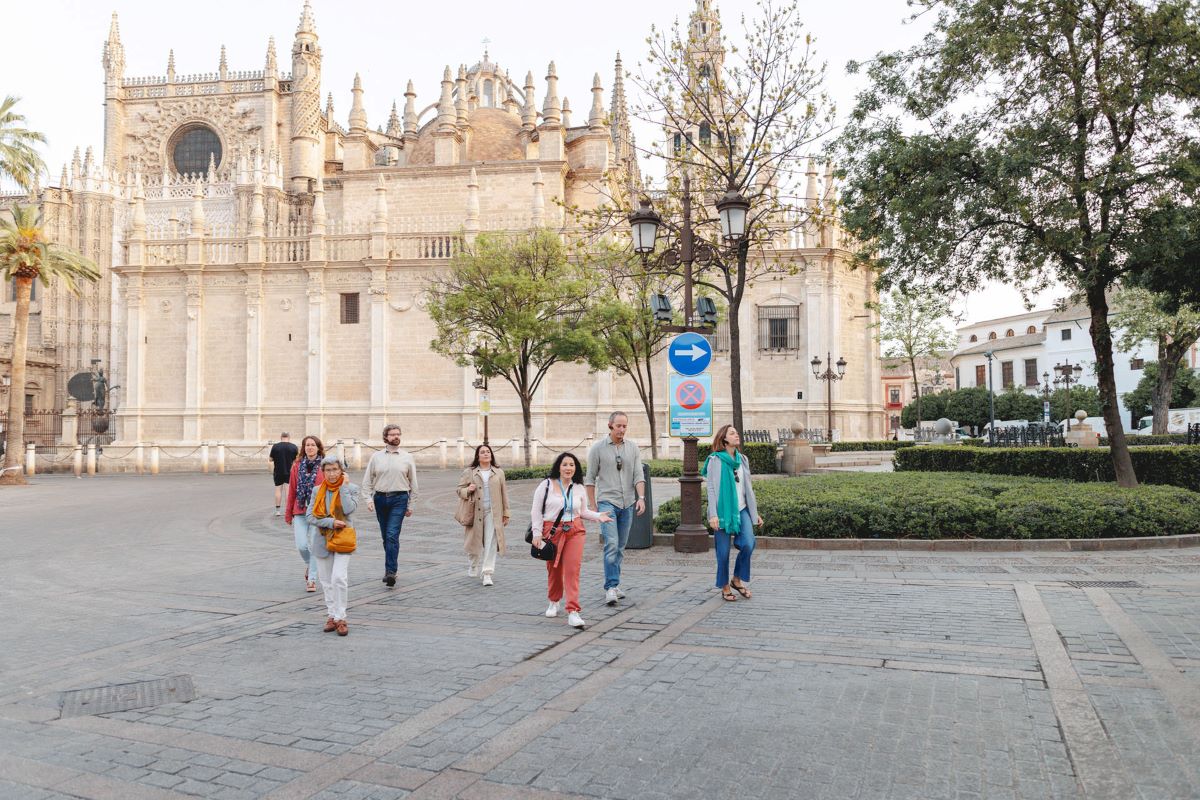
You have decided you want to try these desserts in Seville, but there are two big questions, what to get and how to order. There are two ways to order, depending on whether the convent is cloistered (closed order, separated from the wider world) or not.
Ordering in the non-cloistered convents is straightforward:
- Just ring the bell and a nun will come to take your order.
In cloistered convents like Santa Ana or San Leandro, it is a little different:
- Here you will need to use either an intercom system, or talk through the turntable, the torno to place your order. They will have a list of what they offer nearby for you to make your choice. When the nun on the other side has confirmed your order, they will ask you to place the money in the lazy susan style torno, which they will turn and take and replace with your delicious treats.
Helpful tips:
- Not confident with Spanish? If you are visiting a cloistered convent write your order on a slip of paper, it eliminates the stress of speaking an unfamiliar language and guarantees you get what you are looking for.
- Beware: convents almost exclusively take cash only, so be prepared.

What to order? Common sweets you will find in Andalusia
Andalusia has a strong Arabic influence due to the history of the region, and that is reflected in the sweets on offer here. You will find a lot of almond based sweets, like the tortas de almendras, which are small biscuits which are a great accompaniment to a steaming cup of coffee.
There are also a lot of citrus in the sweets, such as Pestiños Sevillanos, a pastry that is unique to Seville flavored with anise and orange zest and most popular during Christmas and Holy Week.
Other pastries and cookies you will find in most convents in Seville are:
- Roscos de vino: A small ring shaped crumbly cookie that contains a little wine in the dough.
- Mantecados: Similar to a shortbread cookie, but not for vegetarians, the recipe contains manteca, lard in English and are particularly popular round Christmas
- Polvorones: Similar to mantecados, but softer.
Local’s tip:
- Convents are only open for a few hours a day, commonly between 11 am and 1pm, so make sure you get there to not miss out on the buying experience.
- But if you miss that narrow window, you don’t have to miss out on the incredible quality sweets. El Torno, near the cathedral on Avenida de la Constitución, 24 in the beautiful little Plaza Cabildo works with the convents to sell their sweets.

Where to go in Seville for convent sweets
Convento de Santa Paula
The Convento de Santa Paula is a unique and fascinating building in Seville. Dating back to the 15th Century, it is not just one of Seville’s best convents for cookies but also doubles as a sacred art museum. There’s nothing like strolling around the incredible art collection, taking in the building’s unique architecture, and then treating yourself to one of the nun’s delicious sweets.
The nuns here are from the order of San Jerónimo and are cloistered so harem is an opportunity to try out the most traditional way to order via the torno. For immediate snacking, their tocino de cielo can’t be missed.
This flan-style treat is one of the most popular desserts in Seville among locals. But their selection of marmalades, jellies, and jams make an excellent souvenir of your trip to Seville and are unrivaled in quality.
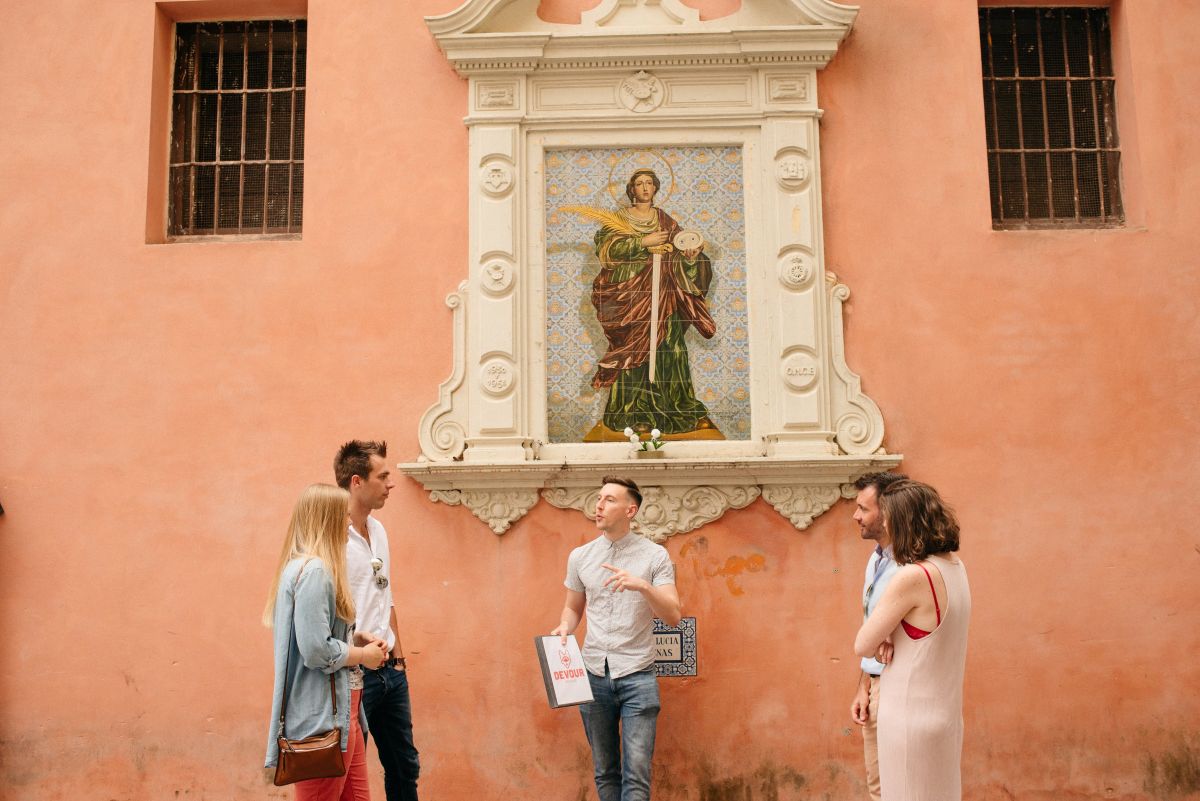
Convento de Santa Ana
Located in the San Lorenzo area of Seville, the Convento de Santa Ana is open every day selling its incredible dulces. This Carmelite convent is especially popular during Seville’s iconic Holy Week celebration. Locals flock to the convento to buy some amazing torrijas, a seasonal treat enjoyed during Semana Santa.
Other amazing treats include truffles, almond bites, mantecados, and their specialty carmelitas. While the door is hard to find it is definitely worth it. There is no menu, so you will have to ask the nuns what they have on sale that day as they bake their treats daily.

Convento Madre de Dios de la Piedad
The story of the Convento Madre de Dios de la Piedad is an especially fascinating one. Once a Synagogue at the edge of the Jewish Quarter of Seville, this convent was given to the Dominican nuns by Queen Isabel the first in 1495, the same queen who was responsible for making Spain Christian again following the reconquest. Finding the convent isn’t easy, but it is oh so worth it as their comprehensive menu doesn’t disappoint.
Here, don’t miss their star sweet, their naranjitos. These orange bites are made of almond flour, sugar, and coated in an amazing orange glaze, made with oranges from their own trees.
Another of their offerings not to be skipped is the bocaditos arabes, small chocolate cookies spiced with clove, sesame, cinnamon, and dusted with sugar. Visit this convent, as well as some other amazing Seville spots on our tastes, tapas and traditions tour.

Monasterio de San Clemente
The oldest monastery in the city, San Clemente, is another amazing place to indulge your sweet tooth in Seville. The building dates all the way back to the 13th Century, to the time of King Fernando III and the reconquest of the city, and still retains some of its original structure.
So if you have a free afternoon, it is worth wandering around to take in the religious art. The cloistered Cistercian nuns here make some incredible sweets, which you order through the torno.
Try their pastas de Almendras, Almond cookies or why not get one of their selection boxes for a sampling of all their delicious offerings. And don’t forget their marmalades, making use of local citrus fruits.

Convento de San Leandro
Convento de San Leandro is not just one of Seville’s best convents for cookies, it is known country-wide as a must visit convent. Why?
For their iconic yemas sweets:
- These specialty bites have a textured center made of egg yolk and orange peel and a thick sugar coating.
- These treats are popular all round Spain at Christmas time, and are a true taste of Seville.
- Although super sweet, they are incredibly delicious and worth exploring the Old Town to find.
This Angustinian convent is another cloistered convent so be prepared to use the lazy susan system for ordering.
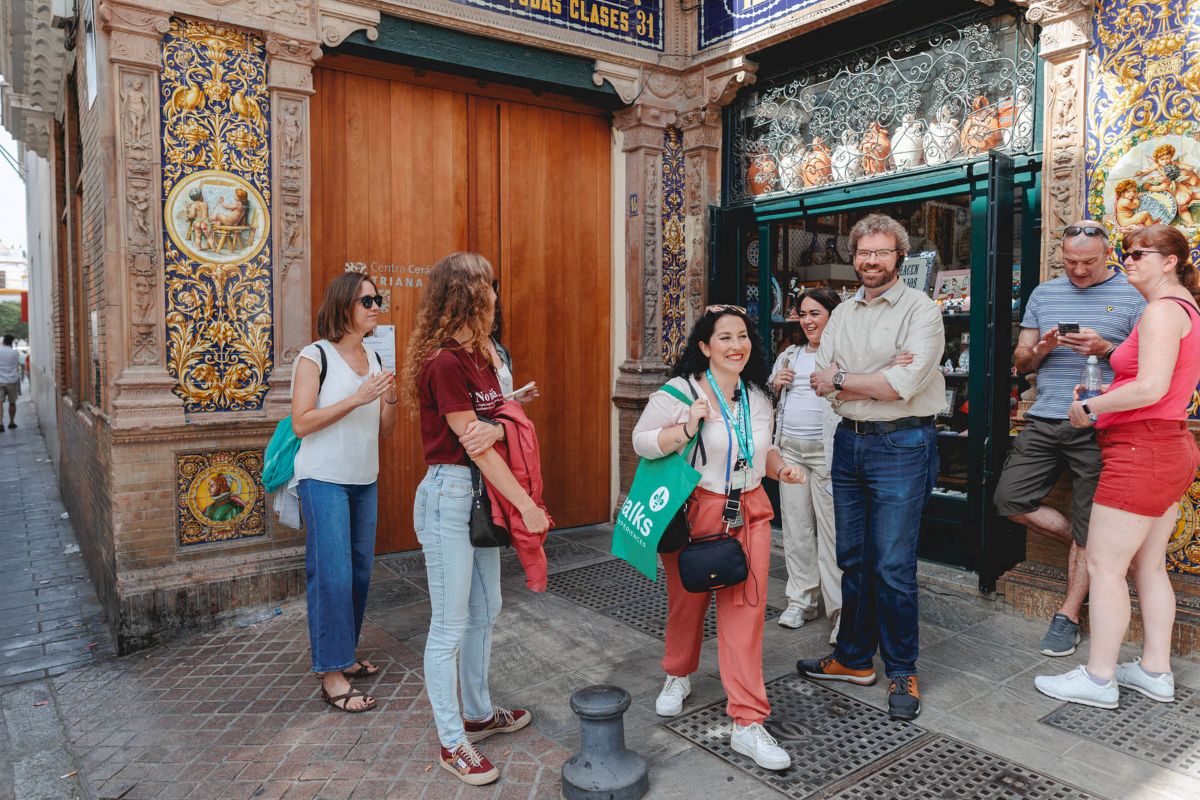
Convento de Santa Inés
Founded in the 14th Century, the Santa Inés convent is famous in Seville for a variety of reasons. Firstly, it is one of Seville’s best convents for cookies, with specialties like their amazing torta de aceite, a famous Sevillano treat made with a lot of olive oil, magdalenas and cortadillos, a typical puff pastry delight.
Not only is this convent famous for its cookies, it is also included in Sevillano poet Gustavo Becquer’s ‘Maese Perez: El Organista’. Local tradition, literary significance, and delicious sweets all in one building, what more could you want?
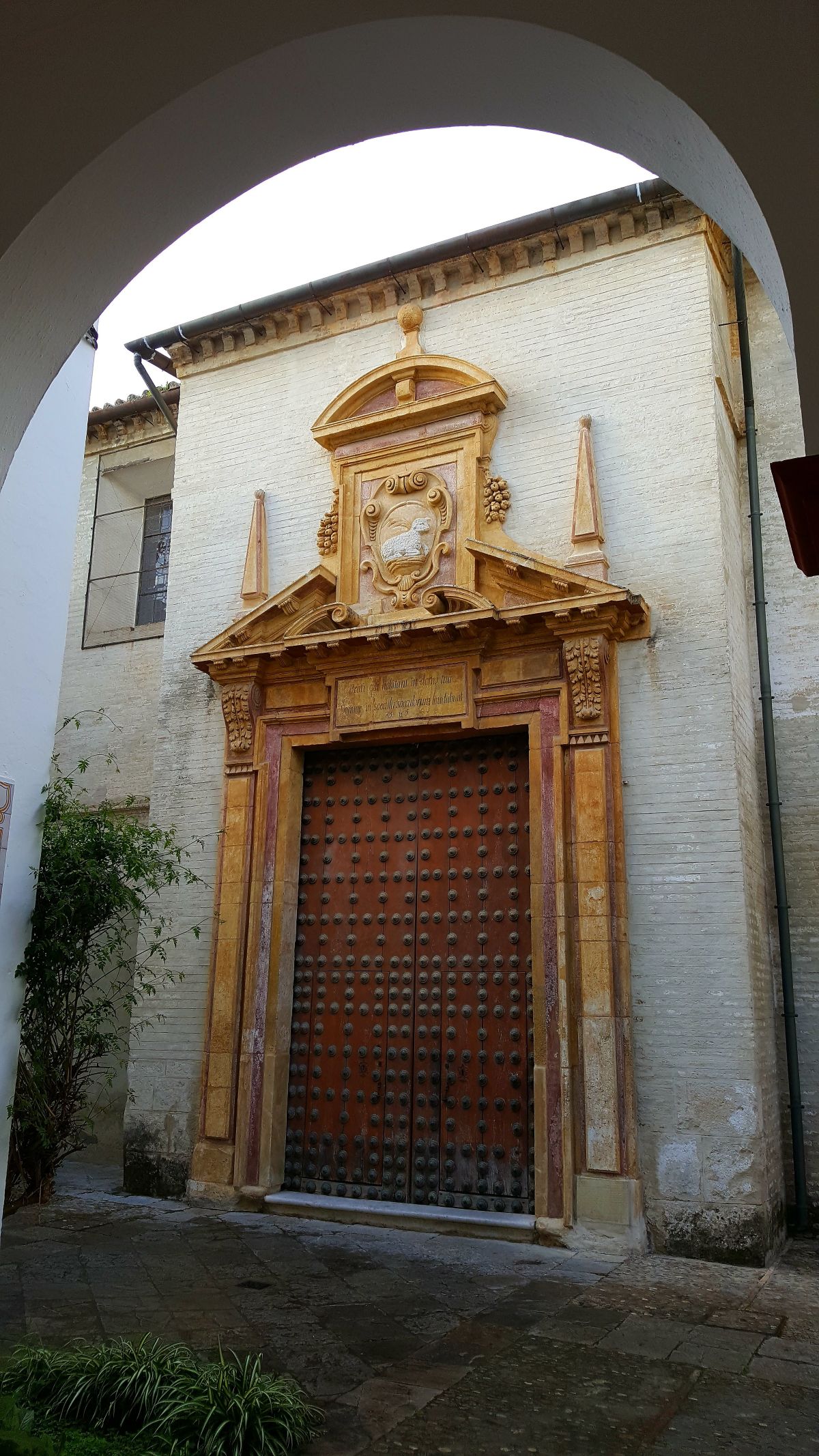
Visiting other regions? Regional specialities across Spain
One of the things we love most about Spain is that each autonomous region has its own identity and culture, almost as if they are different countries entirely. Some convent sweets, such as magdalenas, can be found everywhere, but others are far more regionally specific.
Here is a mini guide to some typical convent sweets in different regions of Spain:
- Castilla la Mancha: Is known for marzipan, particularly in the city of Toledo. These delectable small sweets made from ground almonds, sugar, and eggs come in a variety of shapes. Head to the Convento de San Clemente where the legend of the origin of marzipan in Toledo started.
- In Madrid: The specialties are bartolillos, fried pastries filled with pastry cream and Rosquillas de Santa Clara, a donut-like pastry eaten to celebrate the patron saint of the city. Try them in the Convento de Corpus Christi for a real Madileño experience.
- Galicia, and more specifically Santiago de Compostela: Is known for the tarta de santiago, an almond cake decorated with powdered sugar with the cross of Saint James. Try this local delicacy from the convent San Paio de Antealtares.
- Valencia: Is synonymous with turrón, a nougat made from almonds and honey that can either be hard or soft. Enjoyed all over Spain for Christmas, the best is found in this region. Make your way to Las Hermanas Clarisas de la Puridad for an authentic taste of the legendary confectionery.
- Asturias: As a region is famous for beef and dairy products, so you know their convent cookies are going to be rich and buttery. While in Oviedo, visit Convento de San Pelayo and get their galletas de mantequilla, or butter cookies in English (or better yet, their selection box with a little bit of everything they have).
- Castilla y Leon: They have their own version of the yemas sweets that you can find in Seville. These are a little different from those here, still sweet and egg based. Try them in Ávila at the Convento Santa María de Jesús.

Update Notice: This post was updated on February 25, 2025.


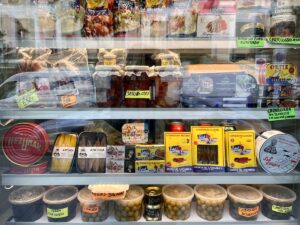
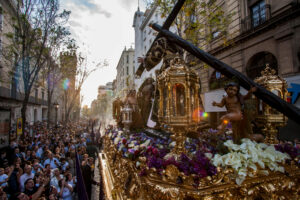






Wonderful post. I always search food oriented blogs. I really enjoy with this blog post. Todays the sale of sweets and cookies is what keeps these convents open and is part of everyday life here. thank you for sharing delicious blog with us.
Hi there. Thank you so much for your kind comments, we hugely appreciate them. Hopefully, we will see you in Seville some time!
Really well done. I went on a Semena Santa Tour with Hayley and it was outstanding. I would reccommend Devours tours highly.
Thank you so much John!! We hope to see you back here soon!